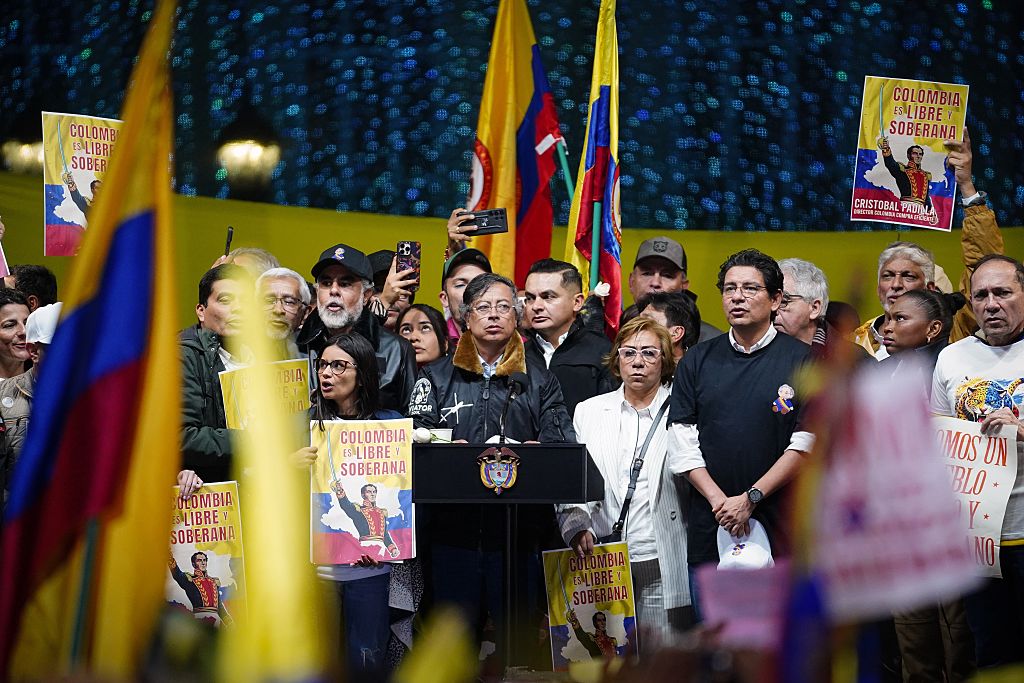Reinvent the Summit of the Americas
Reinvent the Summit of the Americas
Hemispheric summits should return to an economic focus with substantive benefits for participating countries, writes AS/COA's Eric Farnsworth for Current History.
The headlines from the most recent Summit of the Americas obscured a fundamental fact: The process is exhausted in its current form and should be re-engineered. In April 2012, leaders from the Western Hemisphere gathered in Cartagena, Colombia, for the fifth Summit of the Americas since 1994, when President Bill Clinton invited his democratically elected counterparts from the hemisphere to the first meeting in Miami.
Regrettably, the general public will remember the Cartagena Summit only for a Secret Service prostitution scandal. The policy community likely will remember sharp disagreements on the status of Cuba, drug policies, and a new effort by Argentina to wrest the Falkland Islands from the United Kingdom. As a periodic snapshot of the state of hemispheric affairs, it wasn’t pretty. The first summit established an agenda for action that won unanimous agreement. Follow-up summits in Santiago, Chile, and Quebec City, Canada, in 1998 and 2001, respectively, produced similar results. The summits drew democratically elected leaders together to agree on numerous initiatives by consensus, among them a hemispheric democracy charter adopted in September 2001 by the General Assembly of the Organization of American States (OAS) in Lima, Peru, and an agreement to conclude a Free Trade Area of the Americas (FTAA) by 2005.
At the 2005 Summit in Mar del Plata, Argentina, however, the Southern Common Market (MERCOSUR) nations plus Venezuela, led by Brazil, reneged on their earlier, decade-long support for the previously approved FTAA agenda. President Barack Obama’s attendance at the 2009 summit in Trinidad and Tobago was widely praised; nonetheless, immediately after the summit concluded, the United States was put on the defensive over Cuba at the annual OAS General Assembly, and political crises erupted over a coup in Honduras and the manufactured issue of US “bases” in Colombia. Much of the momentum from the summit quickly dissipated.
Having been preoccupied with other priorities in the intervening years, Obama went to Cartagena in 2012 mainly to obtain support for existing initiatives. Into this vacuum leaped leaders who no longer saw their national or political interests as being fully aligned with the United States, and who used the summit to drive a wedge between Latin America and the United States and Canada. For the past decade, Latin America has been on an economic tear, with average annual growth rates ranging between 4 and 6 percent in the aggregate, much of this resulting from a robust commodities trade with Asia broadly, and China specifically.
With an economically distressed United States unwilling or unable to advance a compelling agenda in Cartagena, and much of the region less dependent on the United States than before, more traditional, divisive issues in hemispheric affairs came to the fore. In the end, the 2012 summit failed to produce even a watered-down leaders’ communiqué.
Washington’s Quandary
Where does the hemisphere go from here? The next summit is to be hosted by Panama in 2015. Several leaders in the region have vowed that there will be no further summits without Cuban participation. They will put Washington in a quandary if a nondemocratic Cuba is invited. The Summit of the Americas was specifically developed to support and promote democracy as the only legitimate form of governance in the Americas. Even though the promise of the first summits has been squandered, it is the one forum that links the United States, Canada, Latin America, and the Caribbean together at the leaders’ level. A summit that included the leader of a nondemocratic Cuba would repudiate the core of the panregional agenda, which Washington could not easily accept.
But should the United States stay away in protest, it would starkly signal that Washington had been outmaneuvered in its own hemisphere. Either way, the United States would lose stature, because it has historically been the chief proponent of the democracy agenda. Of course, this is precisely the reason the matter was pursued by a number of leaders before the Cartagena summit, and likely will be again. It is time therefore to reconsider the utility of hemispheric summits. The idea of a united hemisphere no longer exists. Political consensus has broken down, and with it, the summit process. It is difficult to project a scenario whereby consensus is restored in the near term. Without announcing an end to the hemisphere-wide Summit of the Americas process, like-minded leaders can still work to rebuild a framework for hemispheric relations among those nations that do share common values and remain interested in working together toward a common agenda.
One way to do this would be to investigate the idea of subregional meetings with like-minded nations, perhaps also including extraregional nations from both the Atlantic and the Pacific (existing and pending free trade partners in both regions would be logical guests to consider). There is no obligation, for example, to include the Venezuelan-led Bolivarian Alliance for the People of our Nations in a subregional meeting or summit; after all, summits occur regularly in Latin America without the United States, Canada, and others. The Union of South American Nations meets regularly without including Mexico, Central America, or the Caribbean. At the same time, Latin America regularly meets with Spain and Portugal in the Ibero-American process. Other examples abound.
Summits should return to an economic focus with substantive benefits for participating nations that cannot be achieved separately. There must be concrete, positive results that flow from these meetings. The world does not need any more talking shops. Areas crying out for more active hemispheric cooperation include trade and investment relations, financial coordination, energy, and agriculture, among others.
Surmountable Obstacles
Of course, not every nation will want to participate in such meetings, and those that do will not necessarily agree on a comprehensive agenda. That is fine. As the Asia-Pacific Economic Cooperation forum has shown with its so-called “pathfinder” approach, recalcitrant or unprepared nations should not be allowed to prevent progress by those that want to move ahead. The key is to move forward as quickly as possible on as many issues as possible with as many nations as possible. In so doing, the object should be to work toward a vision of regional cooperation that will support the ambitions of participating countries while building an agenda that will ultimately prove enticing for nonparticipating nations.
At the same time, the Cuba issue should not be allowed to dominate. Meetings at the United Nations and elsewhere regularly occur with the participation of both the United States and Cuba, though not necessarily at the leaders’ level. In fact, the 1996 region-wide Sustainable Development Summit of the Americas in Santa Cruz, Bolivia, which did not include Cuba, was attended by then–Vice President Al Gore. If a nondemocratic Cuba is invited to the next summit over the objections of the United States and others, nations could consider sending vice presidents or even cabinet-level representatives.
The Summit of the Americas is no longer the effective forum for regional cooperation that it once was. This is a shame, but it is not an insurmountable obstacle. Instead of lamenting its current ineffectiveness, regional leaders should reinvent summitry in the Americas among nations sharing a common vision for the future and a willingness to collaborate in achieving it.
Eric Farnsworth is vice president of the Americas Society/Council of the Americas. While serving in the State Department and White House, he was involved in planning the first two Summits of the Americas, in 1994 and 1998.








